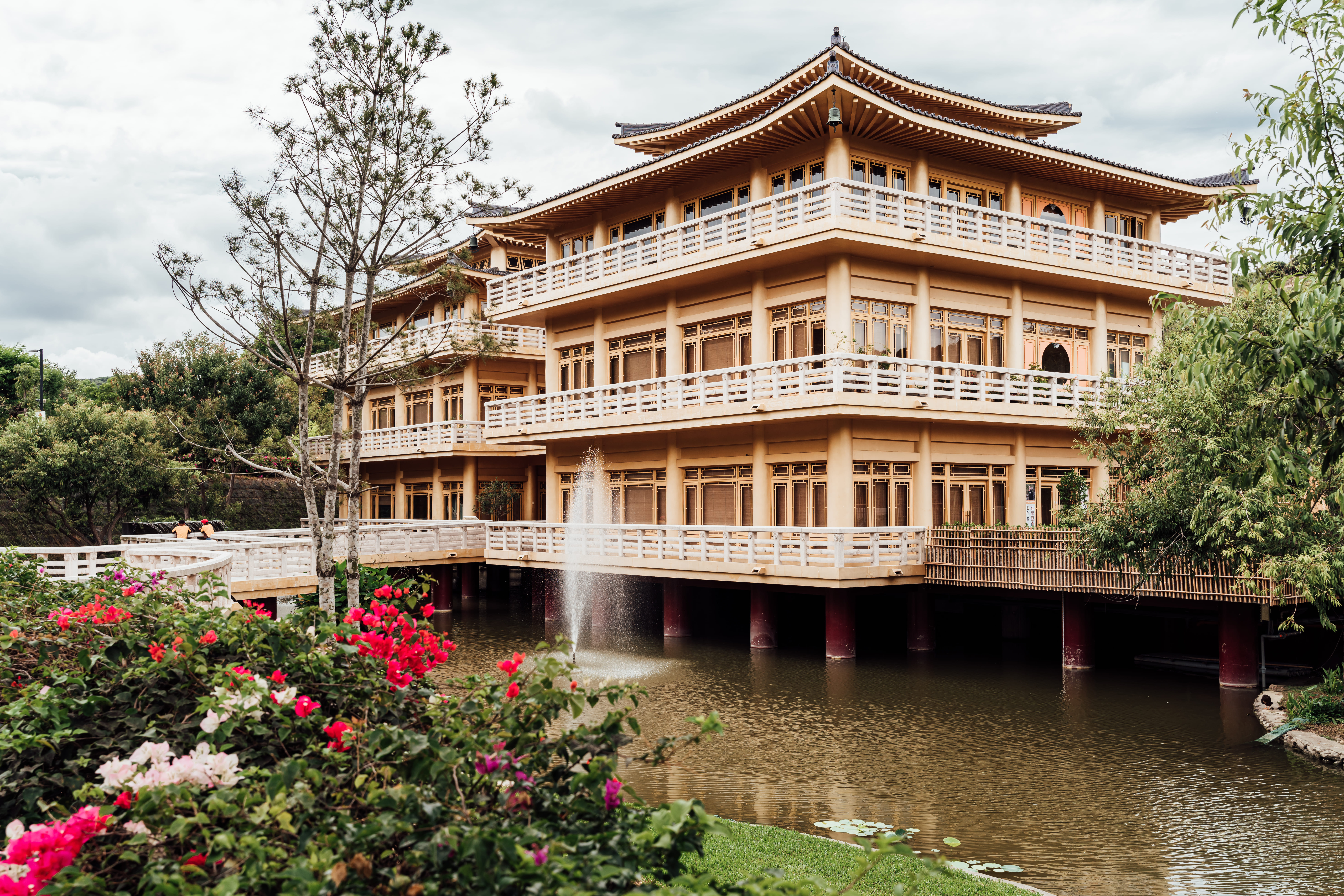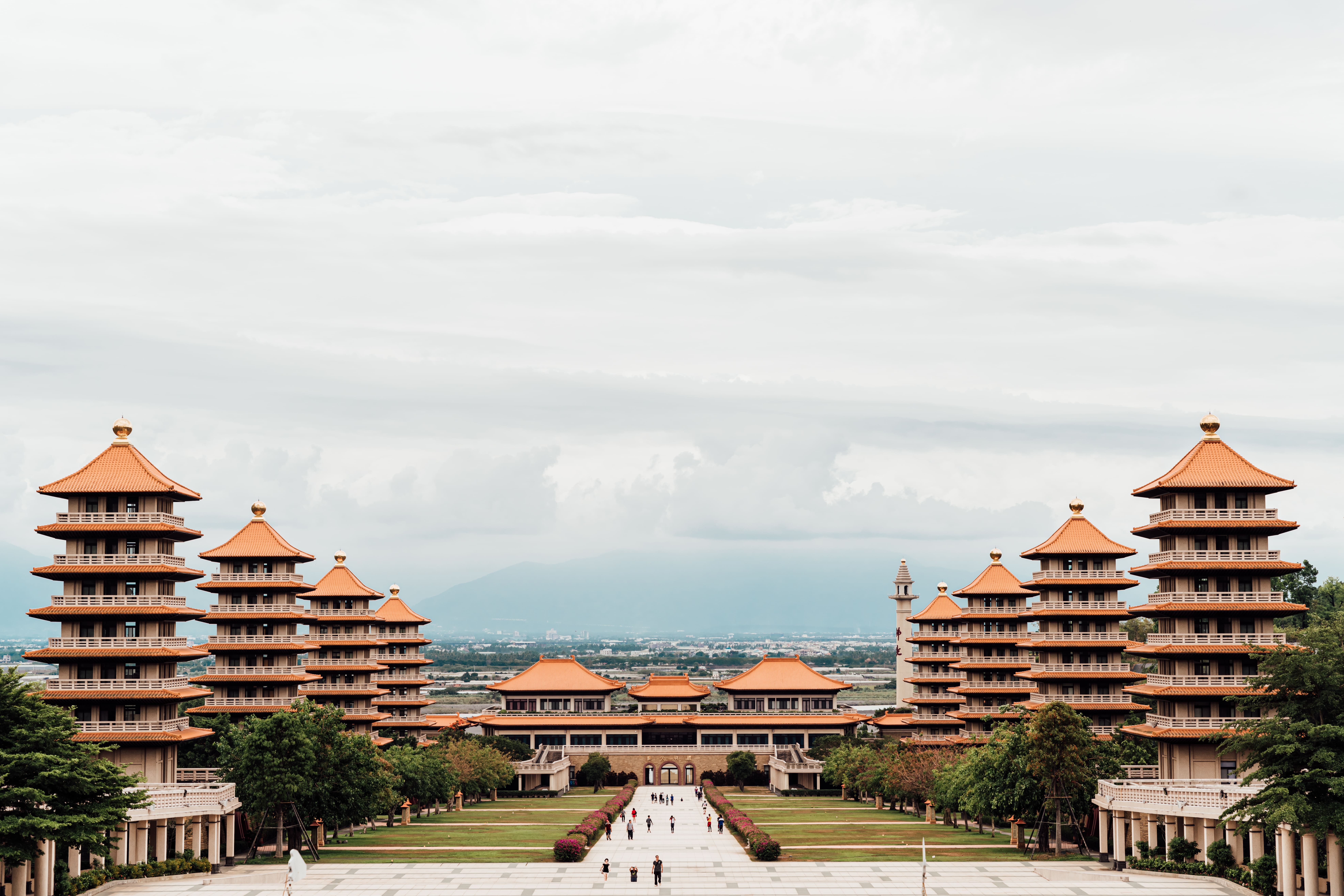Fo Guang Shan

Source:Chang Chieh-Tsung
The 48 Underground Palaces, a cycle of distribution spread over 4,800 years, the Eight Pagodas, and 4 paths to relieve suffering. A sense of grandeur is one’s first impression on entering Fo Guang Shan in Kaohsiung. Standing under the towering Great Buddha, amidst mountain and forest, one’s smallness is perceived, and humility is born spontaneously. Amidst Fo Guang Shan’s colorful aesthetics, the wisdom of people, of scenery, and of heaven and earth is borrowed. In achieving a state of tranquility, here no demands are made of these.
Views
Fo Guang Shan
By Chang Chieh-TsungSponsored Content
A Gift for the Future – A Museum for the Mortal World
“From a visual perspective the park seems vast, but in fact the surrounding mountains are not ours,” says the Venerable Ru Chang, Director of the Buddha Museum. Work on the park, which covers more than 100ha, took nine years and was completed in 2011. The grounds are long and narrow in shape, but because the original design of the Buddha Museum did not make effective use of this, color configuration was utilized to create a visual extension.
The green of the parkland connects with the surrounding mountain scenery, making the Buddha Museum one with nature. The yellow roof tiles and golden Great Buddha have a mutual radiance, and venerable masters occasionally walk among them, garbed in their similar earth-tone brown robes. Looked on from a high vantage point, these yellows and greens are like splashes of stability, forming a base amidst the sprawling canvas of blue sky and white clouds. “The purer the colors, the easier it is to calm the person’s mind.” This is the secret behind the colors of the Buddha Museum. I describe it thus: “Borrowing heaven, borrowing earth, borrowing scenery, borrowing colors, borrowing people.”

The Buddha Museum also possesses secrets in numbers. Utilizing the Great Buddha as the visual center, an Indian-style stupa stands in each of the four directions. These symbolize the Four Noble Truths, the path to the end of suffering: Suffering, Cause, End, and Path. To eliminate suffering, one must find happiness. Eight Chinese pavilion-style pagodas line the Great Path to Buddhahood, creating the Eightfold Path that leads to liberation and blissful happiness. The pagoda, which spans architectural forms, represents the long journey of Buddhism from India to China.

How should visitors read the profound meaning of the various spaces at the Buddha Museum? The Venerable Ru Chang has this recommendation: “The first time visiting, walk along the central axis, which has bodhi trees planted along both sides of the pathway. Because the Buddha attained enlightenment under the Bodhi tree, and entered nirvana between Sala trees, at the end of the pathway sala trees replace the bodhi trees, symbolizing the ceaseless regeneration of life. Continuing further, you reach the Fo Guang Big Buddha. On a second visit, spend time at the Twin Pavilions and strolling the botanical garden, experiencing the flavors of tea Chan. On a third visit you can stay overnight, to cleanse the heart of dust.”

Information:
Fo Guang Shan Buddha Museum
No. 1, Tongling Rd., Dashu Dist., Kaohsiung City 840, Taiwan
07-6563033
http://www.fgsbmc.org.tw/en/







